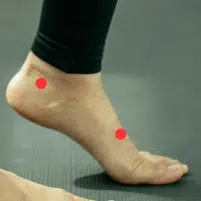Licensed Practical Nurse/Licensed Vocational Nurse (LPN/LVN) programs prepare you to work as a practical nurse caring for patients at the bedside. Good LPN programs prepare you to answer questions on the National Council Licensure Examination for Practical Nurses (NCLEX-PN). Passing your NCLEX-PN exam is the first step in securing a staff LPN/LVN job and earning a staff LPN salary. Let’s explore the ins and outs of the NCLEX-PN and various types of NCLEX-PN practice questions to help you prepare to write the exam.
Understanding the NCLEX-PN Exam

The NCLEX-PN assesses the competencies and ability of new LPN/LVNs to practice safely and effectively. It’s developed and regulated by the National Council of State Boards of Nursing (NCSBN). The benefit of a highly regulated exam is that there aren’t any surprises. There’s a plethora of information on the NCSBN website. You’re headed in the right direction if you take the time to review the NCLEX-PN test plan and sample questions to better understand the format and content areas.
NCLEX-PN Format
The NCLEX-PN is administered via computerized adaptive testing (CAT), customizing each exam to the candidate’s abilities. Everyone must answer 85-150 items within five hours, including content-area items, clinical judgment case studies and unscored pretest items. The exam’s length varies based on responses, but the number of questions you receive doesn’t indicate whether you passed or failed.
The NCLEX-PN exam has a revamped format effective from April 2023 to March 31, 2026, called the Next Generation NCLEX-PN. The new exam focuses more on clinical judgment and patient safety. It tests whether new LPN/LVNs have the essential skills to handle clients with common health issues that have predictable results.
Structured around four primary Client Needs categories, the NCLEX-PN Test Plan includes the following categories:
- Safe and Effective Care Environment
- Coordinated Care
- Safety and Infection Control
- Health Promotion and Maintenance
- Psychosocial Integrity
- Physiological Integrity
- Basic Care and Comfort
- Pharmacological Therapies
- Reduction of Risk Potential
- Physiological Adaptation
It also features several styles of questions, including:
- Multiple-Choice Questions
- Fill-in-the-Blank Calculations
- Ordering and Priority Questions
- Hot-Spot Questions
- Extended Drag and Drop
- Drop Down
- Enhanced Hot Spot/Highlighting
- Matrix/Grid
- Standalone Items
NCLEX-PN Practice Questions
Practice questions are crucial for NCLEX-PN preparation, mirroring the exam environment and fostering essential test-taking skills. They reinforce theoretical knowledge, aiding retention and comprehension of critical concepts and familiarization with the exam’s structure. Practice questions also pinpoint content areas for targeted review, improve time management and enhance efficiency within the exam’s time constraints.
Effective strategies involve consistent practice, reviewing incorrect answers to understand mistakes, simulating exam conditions and tracking progress over time. By following these strategies, practice questions can help you assess your knowledge and build confidence in preparation for the NCLEX-PN.
Sample Questions: NCLEX-PN
Sample Multiple-Choice Question:
A hospital admits a client with type 1 diabetes mellitus for diabetic ketoacidosis (DKA). The nurse is developing a care plan for the client. Which nursing interventions are appropriate for managing DKA? Select all that apply.
A. Administer regular insulin as ordered.
B. Monitor blood glucose levels every 12 hours.
C. Encourage fluid intake to prevent dehydration.
D. Assess for signs of hypoglycemia.
E. Monitor for ketones in the urine.
F. Limit potassium-rich foods in the diet.
Answer:
A. Administer regular insulin as ordered.
C. Encourage fluid intake to prevent dehydration.
E. Monitor for ketones in the urine.
Rationale:
A. Administering regular insulin is crucial for managing DKA by promoting glucose utilization.
C. Encouraging fluid intake helps prevent dehydration, which is common in DKA.
E. Monitoring for ketones in the urine is essential to assess the effectiveness of treatment.
Sample Fill-in-the-Blank Calculation Question:
Instructions: Fill in the blank with the correct medication dose. Round your answer to two decimal places.
A client is prescribed medication at a dosage of 0.025 mg per kilogram of body weight. The client weighs 65 kilograms. Calculate the client’s medication dose.
Medication dose: ________ mg
Answer:
Medication dose: 1.63 mg
Rationale:
Multiply the client’s weight (65 kg) by the prescribed medication dose (0.025 mg/kg):
65kg×0.025 mg/kg=1.625 mg65kg×0.025mg/kg=1.625mg
Rounded to two decimal places, the client’s medication dose is 1.63 mg.
Sample Ordering and Priority Question:
Instructions: Arrange the nursing interventions in the order of priority by numbering them from 1 to 4, with 1 being the highest priority and 4 being the lowest priority.
A nurse is caring for multiple clients on a medical-surgical unit. Prioritize the following nursing interventions for four different clients based on their immediate needs:
- Administering pain medication to a postoperative client.
- Assisting a diabetic client with insulin administration.
- Ambulating an elderly client recovering from hip surgery.
- Notifying the healthcare provider of a sudden change in a client’s vital signs.
Answer:
- Notifying the healthcare provider of a sudden change in a client’s vital signs.
- Administering pain medication to a postoperative client.
- Assisting a diabetic client with insulin administration.
- Ambulating an elderly client recovering from hip surgery.
Rationale:
Notifying the healthcare provider of a sudden change in vital signs takes precedence as it involves potential critical issues. Administering pain medication addresses immediate comfort. Assisting a diabetic client with insulin administration is crucial for maintaining blood glucose levels. Ambulating an elderly client is essential but can be scheduled based on the client’s recovery and safety.
Sample Hot-spot Question:
Instructions: Click on the spot on the foot diagram where a nurse should palpate for pedal pulses.

Answer:

Rationale:
Palpating pedal pulses (dorsalis pedis and posterior tibial) on the foot’s dorsum and behind the medial malleolus is essential for assessing lower limb circulation. This practice aids in early detection of circulatory issues, establishes baselines for comparison and is particularly crucial in diabetic patient care, ensuring timely intervention and improved outcomes.
Next Generation Questions:
The Next Gen NCLEX introduces additional question types, building on the familiar ones from the previous exam, but still ranges from 85 to 150 questions. Next Gen NCLEX-PN questions incorporate the following types of questions:
Drop-Down: Choose one option from a drop-down list in sentences, tables or charts. Three types of drop-down questions induce:
- Cloze: Complete a paragraph by selecting one or more options from drop-down menus. Each sentence contains three to five choices per drop-down, and the section may have one to five drop-down lists.
- Rationale: Includes a sentence depicting either one cause and one effect or one cause and two effects. Choose the appropriate responses from the provided drop-down list.
- Table: Similar to Drop-Down Rationale but in table format.
Enhanced Hot Spot/Highlighting: Candidates highlight pre-defined words or phrases in scenarios, with two types:
- Text: Selection of text parts to determine the critical action.
- Table: Similar to text but in table format.
Extended Drag and Drop: Similar to the current NCLEX-ordered response questions, candidates drag response options into answer spaces. However, in the extended version, there might be more options than spaces, leaving the test taker with leftover answers. There are two types:
- Cloze: Dragging and dropping a minimum of four to a maximum of 10 items from a list.
- Rationale: Dragging and dropping appropriate responses comprising a sentence featuring either one cause and one effect or one cause and two effects. Drag and drop the suitable responses from the provided list.
Extended Multiple Response: This type extends the current NCLEX multiple response questions, allowing candidates to choose one or more answer options. There are three subtypes:
- SATA: Select All That Apply
- Select N Item: N is a preset number of required selections
- Multiple Response Grouping: Presenting several SATA-like questions in a table format.
Matrix/Grid: Prospects select one or more options for each row or column to assess multiple parts of a scenario. Often presented in case study form with client information, the test taker must use clinical judgment about the case study by picking the appropriate answers in the grid. There are two types:
- Multiple Choice: Four to 10 rows with two to three options per column.
- Multiple Response: Two to 10 columns and four to seven rows.
Standalone Items: These items require using information from Case Studies that build upon each other in six questions following the sequencing needed for appropriate clinical decision-making. There are two types of stand-alone items:
- Bowtie: Addressing all six NCSBN Clinical Judgment Measurement Model steps in one question in a drag-and-drop format.
- Trend: Engages with various stages of the NCSBN Clinical Judgment Measurement Model, prompting candidates to assess information chronologically. This approach allows the use of any type of question response.
Setting Up a Study Plan and Prep Strategies

Crafting an effective study plan is vital for exam prep. Begin by choosing reliable materials like official guides and review programs tailored to the NCLEX-PN. The earlier you can start prepping, the better. A well-structured approach, incorporating essential resources and peer collaboration, enhances your chances of success. Several online resources adapt to your study progress, generating a personalized plan based on your provided test date.
Monitoring Your Progress
Tracking your NCLEX-PN progress is essential for improvement. Incorporate full-length, timed practice tests into your routine to identify weak areas and simulate exam conditions, enhancing confidence. These tests aid time management, simulate stress and assess comprehensive content coverage. After each attempt, analyze your results, focus on weak areas, adjust your study plan and set realistic improvement goals. Leverage feedback from online simulations for targeted improvement. Regular monitoring and strategic self-assessment help ensure your readiness for the actual exam.
Day-Of Test-Taking Strategies
Prioritize sufficient rest, ensuring a good night’s sleep the night before your exam. Optimize your brain function, memory and alertness with a nutritious breakfast on the morning of your exam. Cultivate a positive mindset by reminding yourself of your preparation and capabilities. The official NCLEX website recommends arriving 30 minutes early to the testing center, allowing you to check in without being on a tight time constraint.
For time management during the exam, allocate specific time to each question, aiming for one to two minutes per question. Regularly monitor your pacing to ensure a steady progression through the exam.
To overcome test-related anxiety, practice deep breathing exercises to manage stress and stay calm during the exam. Utilize positive affirmations to boost confidence and counter negative thoughts. Focus on one question at a time, avoiding overwhelming thoughts about the entire exam.
Remember, passing the NCLEX-PN involves adequate preparation and applying smart test-taking strategies. Stay focused, manage your time wisely and approach each question with a methodical mindset to maximize your chances of success.
Test Day Protocols
As a strictly regulated exam, there’s no doubt that the policies surrounding test day are equally as strict. It’s essential to familiarize yourself with NCSBN protocols and what the day of testing will look like. Some things you can expect surrounding the check-in process on test day are:
- Storing your devices in a zip lock bag provided by the test center
- Ensuring nobody waits in the test center for you
- Providing a nonexpired, valid picture ID, such as:
- Passport books and cards
- Driver’s license
- Provincial/territorial or state identification card
- Permanent residence card
- Military identification card
- Providing an electronic signature agreeing to the terms and conditions of the NCLEX
- Submitting to a photograph and palm vein scan.
There’s a lot to keep in mind leading up to your exam. For a more in-depth description of what to expect, visit the NCLEX website.
Post-Test Expectations

One of the most bizarre feelings about taking the NCLEX is when the test turns off, especially if it happens right when you’re getting in the flow of answering the questions. When the test turns off, you’ve completed your exam. You’ve answered enough questions to prove without a doubt whether you’re above or below the passing standard. You must complete a short survey, then raise your hand, and the exam administrator will escort you out of the room.
Getting your official results from the state regulatory body you’re registering with can take up to six weeks. Although not available in all states, unofficial results are available for a fee within 48 hours on the Pearson Vue website. If you pass, you simply get a pass email with no details of the areas in which you excelled.
Unsuccessful test-takers receive a Candidate Performance Report (CPR) detailing strengths and weaknesses detected within the NCLEX test plan. If you’re unsuccessful, you can retake the test in 45 days. Spend additional time on the areas marked as weaknesses before your next attempt to help ensure you succeed.
Additional Resources
Free Resources:
- Nurselabs – NCLEX-PN Practice Questions & Test Bank
- Kaplan – Free NCLEX-PN Practice Questions
- YouTube – NCLEX-PN Practice Test 2023 with Explained Answers
Paid Resources:
- Saunders Comprehensive Review for the NCLEX-PN Examination
- Hurst Review Services
- NCLEX-PN Mastery App
Official NCLEX-PN Resources:
- NCSBN NCLEX-PN Examination Candidate Bulletin
- NCSBN NCLEX-PN Test Plan
- NCSBN NCLEX Sample Questions and Exam Preview
Practice Tests:
When using any paid resources, check for trial periods or sample content to ensure compatibility with your learning style. Combining various resources can provide a well-rounded approach to your NCLEX-PN preparation.
Remember, success on the NCLEX-PN isn’t just about memorizing facts but understanding how to apply your knowledge in real-world scenarios. Stay focused, stay positive and believe in your ability to overcome challenges. Head over to Vivian Health for more NCLEX tips to help you pass.
Accelerate your career by exploring the latest job openings from top staffing partners on Vivian Health today.









